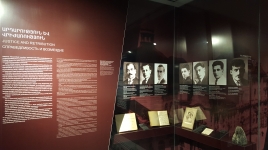Operation Nemesis
Friday, June 16, 2023
Between 1920 and 1922, a clandestine cell of the Armenian Revolutionary Federation carried out seven killings, the best-known being the assassination of Talaat Pasha, the main orchestrator of the Armenian genocide, by Armenian Soghomon Tehlirian in March 1921 in Berlin.
The Armenian Revolutionary Federation (ARF) was active within the Ottoman Empire in the early 1890s with the aim of unifying the various small groups in the empire who advocated for reform and a certain degree of autonomy within the empire. ARF members formed fedayi guerrilla groups that helped organize the self-defense of Armenian civilians. In July–August 1914, the 8th congress of the ARF was a watershed event. Members of the Committee of Union and Progress requested assistance from the party in the conquest of Transcaucasia by inciting a rebellion of Russian Armenians against the Russian army in the event of a Caucasus Campaign opening up. The Armenians agreed to remain loyal to their government, but declared their inability to agree to the other proposal.
Prominent ARF members were among the Armenian intellectuals targeted on April 24, 1915 in Constantinople. The arrested people were moved to two holding centers near Ankara under Interior Minister Mehmed Talat's order on April 24, 1915, and mostly deported and killed.
In 1919, after the Armistice of Mudros, Turkish courts-martial were convened in Constantinople, during which some of the principal perpetrators of the Armenian genocide were convicted and sentenced to death. The UK seized some of the perpetrators from the Ottoman authorities in several of Istanbul's prisons, after their incompetency in failing to hold fair trials, and transported them to the British colony of Malta. There, the Malta exiles (so-called by Turkish sources) were, after Mustafa Kemal Atatürk's incarceration of Lord Curzon's relative, exchanged for British subjects detained by the Turkish government of Atatürk. Since there were no international laws in place under which they could be tried, the men who orchestrated the genocide travelled relatively freely throughout Germany, Italy, and Central Asia.





